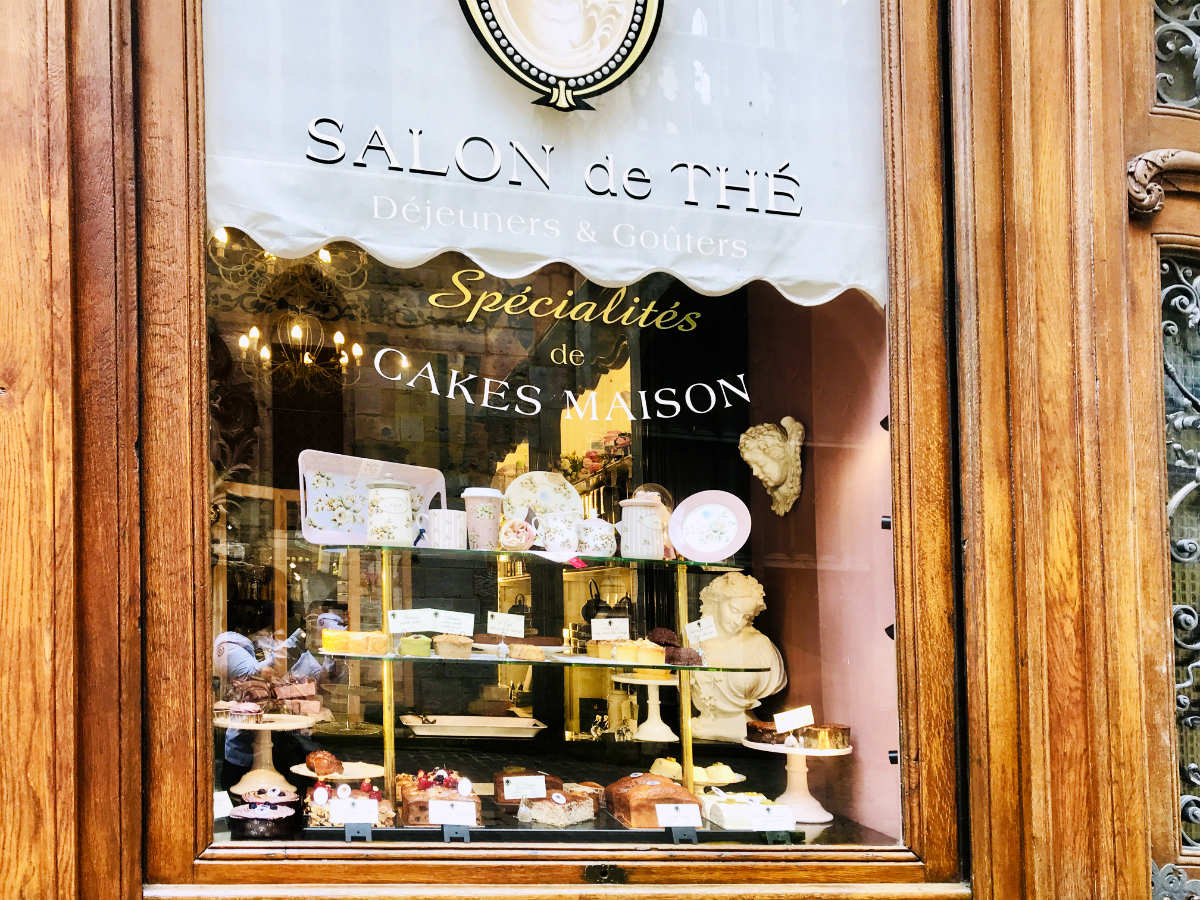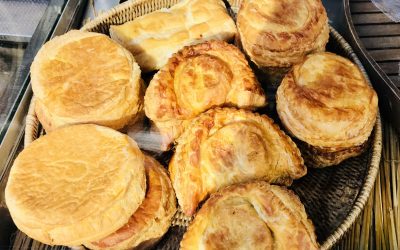French cakes are some of the most exquisite in the world. Whether you enjoy a tempting millefeuille in the morning, or a baba au rhum after dinner, there are many different kinds of cakes coming from across France to drool over and enjoy.
Known for their rich, creamy fillings and delicate, flaky crusts, these cakes have been making people smile for centuries. Patisserie and cake-making is considered an art form in France, and young apprentice chefs in France must earn a license be able to call themselves a “pâtissier”.
Using fresh ingredients and age-old techniques, these cakes have been traditional classics that are instantly recognizable in French cuisine. So let’s uncover the best French cakes to try and enjoy, shall we? Allons-y!
- 1. Mille Feuille
- 2. Fraisier
- 3. Charlotte Russe
- 4. Buche de Noël
- 5. Baba au rhum
- 6. Fiadone
- 7. Kugelhopf
- 8. Croquembouche (Piece montée)
- 9. Canelé
- 10. Madeleine
- 11. Quatre Quart
- 12. Dacquoise
- 13. Paris – Brest
- 14. Gateau St. Honoré
- 15. French Flan
- 16. Clafoutis
- 17. Brioche
- 18. Financier cake
- 19. Galette des rois
- 20. Gâteau Opéra
- 21. Gâteau Basque
- 22. Far Breton
- 23. Gâteau au Yaourt
- 24. Fenetra cake
1. Mille Feuille
An exquisitely complicated cake to make, the mille feuille means 1000 layers, and is composed of layers of puff pastry and cream. It is sometimes also called the gâteaux Napoléon.

The pastry is folded several times, which is why it is called mille feuille, and the butter cream filling then added to the layers and cooled overnight.
Fun fact: The French love of paperesse is called the “millefeuille administrative”.
2. Fraisier
Nothing says summer like a classic French fraisier. The name comes from fraise, meaning “strawberry”. A dessert filled with cream and strawberries, you could eat one every night and discover a different flavor or texture to it.
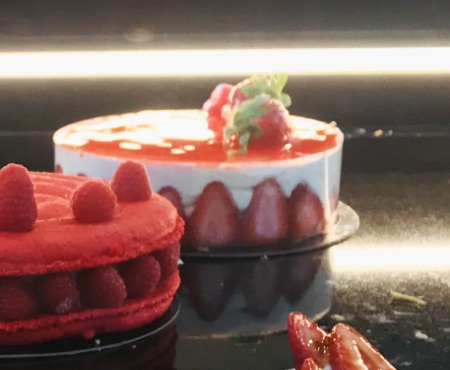
It is a sponge cake, topped with cream and strawberries. It can come in individual size portions or as a full cake to serve with guests.
3. Charlotte Russe
The charlotte russe is said to have been created by famed French chef Antoine Carême in 1803, when he opened up a patisserie in Paris. (It is not clear how he came up with the name.)
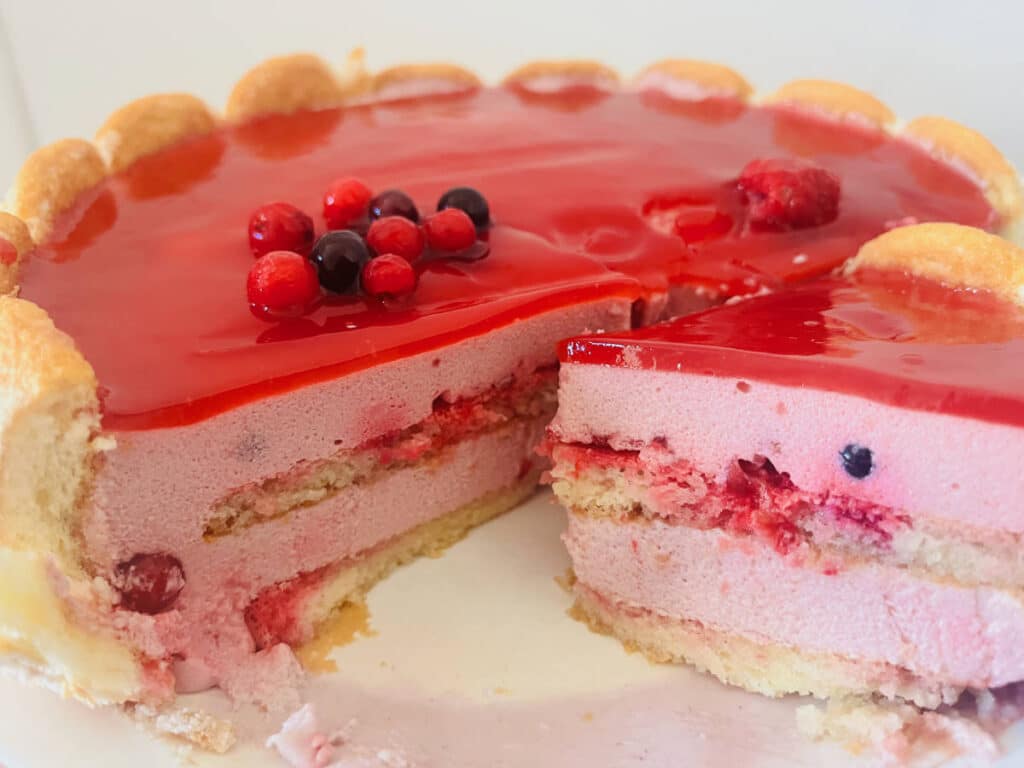
The cake is immediately recognisable by the small pieces of sweet white bread or biscuits that line the bottom and all around. The biscuits are called biscuits à la cuillère or boudoirs aux oeufs and are easily available in grocery stores across France and in North America as “lady finger biscuits”.
Typically made with raspberries, fruit charlottes usually combine a fruit purée or preserve with a custard filling, chantilly, or whipped cream. But you can also have a chocolate charlotte is made with layers of chocolate mousse filling.
4. Buche de Noël
Bûche de Noël, meaning Christmas log, is the staple of the Christmas meal in France.
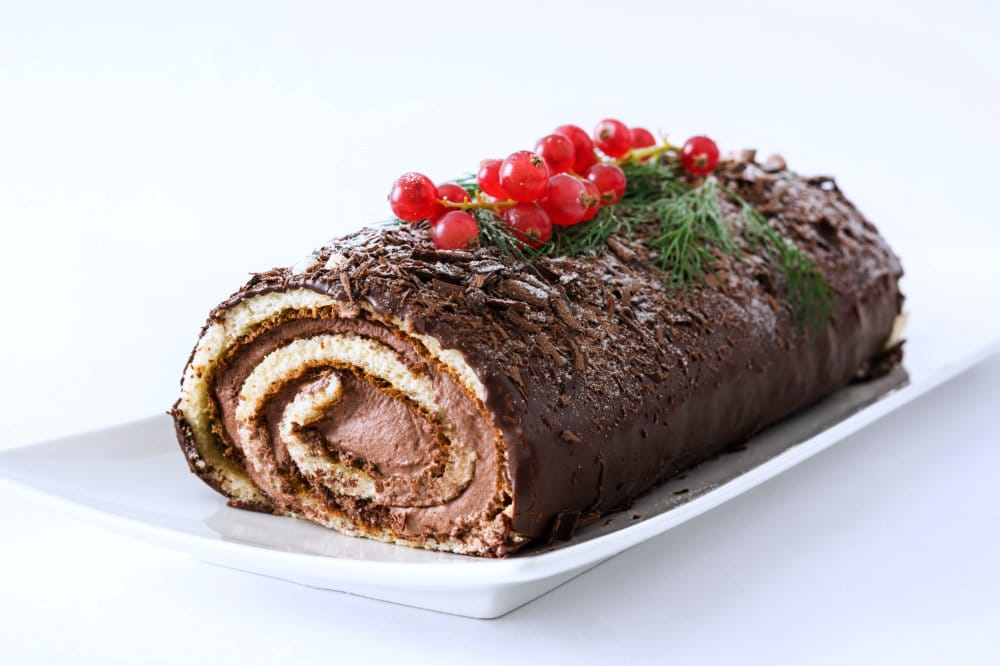
There are many other Christmas traditions, but this is one of those that is followed religiously (pun intended!). It is basically a chocolate roll cake, but can also come in other flavors such as strawberry.
A similar cake is also served in France at Easter and New Year’s eve. Note, the bûche de Noël is not one of the traditional 13 desserts of Provence, it is usually served at Christmas along side those other 13 desserts.
5. Baba au rhum
The Baba au Rhum is said to be invented by the same guy who invented French onion soup.

Ex-Polish King Stanislas (whose daughter Marie happened to be married to French King Louis XV) was in exile in the Alsace-Lorraine region, when he decided to take their traditional gugelhupf cake and douse it in liquor.
With a dash of cream, fresh berries and rhum, this dessert is one for the ages. You can get the recipe for baba au rhum here.
6. Fiadone
The fiadone is a corsican tarte made normally with brousse or ricotta cheese, grated coconut, a hint of lemon and vanilla.
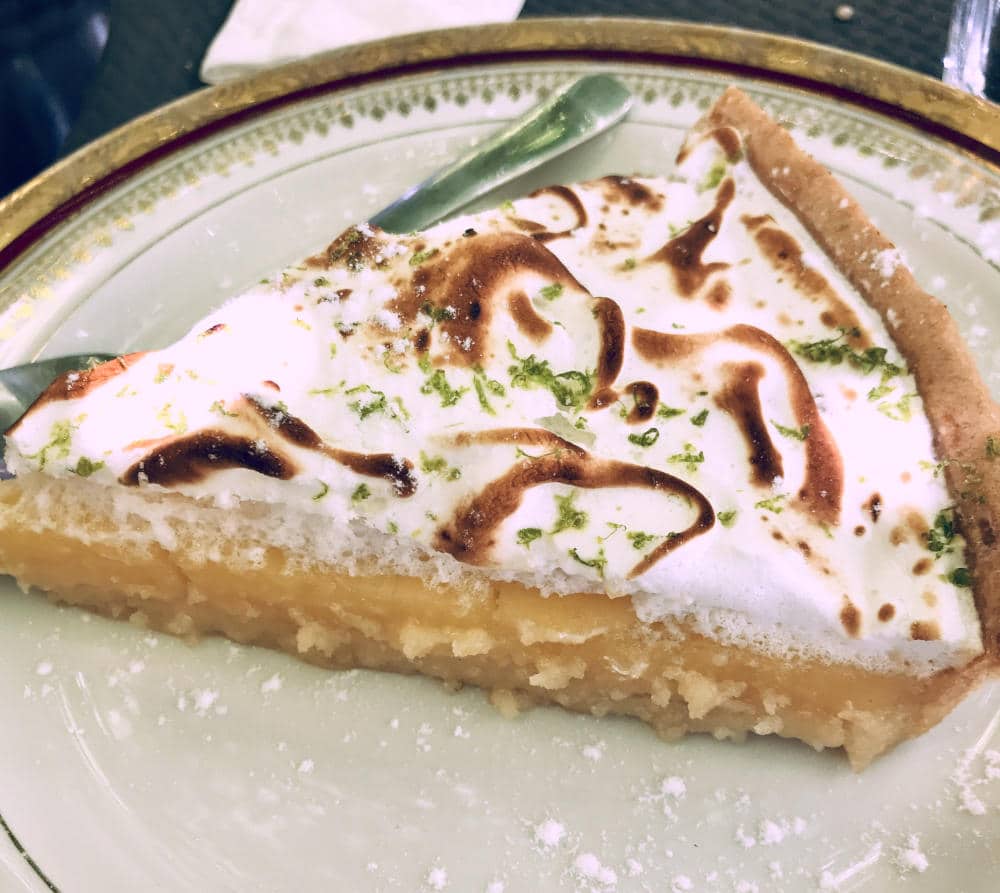
It is normally very light and fluffy and goes down well on a hot summer’s day, which is why you find it typically in the South of France.
7. Kugelhopf
If you are looking for a dessert in Alsace, try the Kugelhopf cake (Gugelhupf in German).
In Alsace, it is a traditional cake with raisins made in bundt mold (compared to other versions with cocoa, lemon, etc). The raisins are sometimes soaked in rhum, so check before ordering if you don’t want it with alcohol.
8. Croquembouche (Piece montée)
You won’t see a piece montée unless you go to a traditional French wedding, but if you do, you should definitely try it. Instead of elaborate cake, weddings in France usually have a doughy pastry pyramid called the croquembouche or la piece montée.
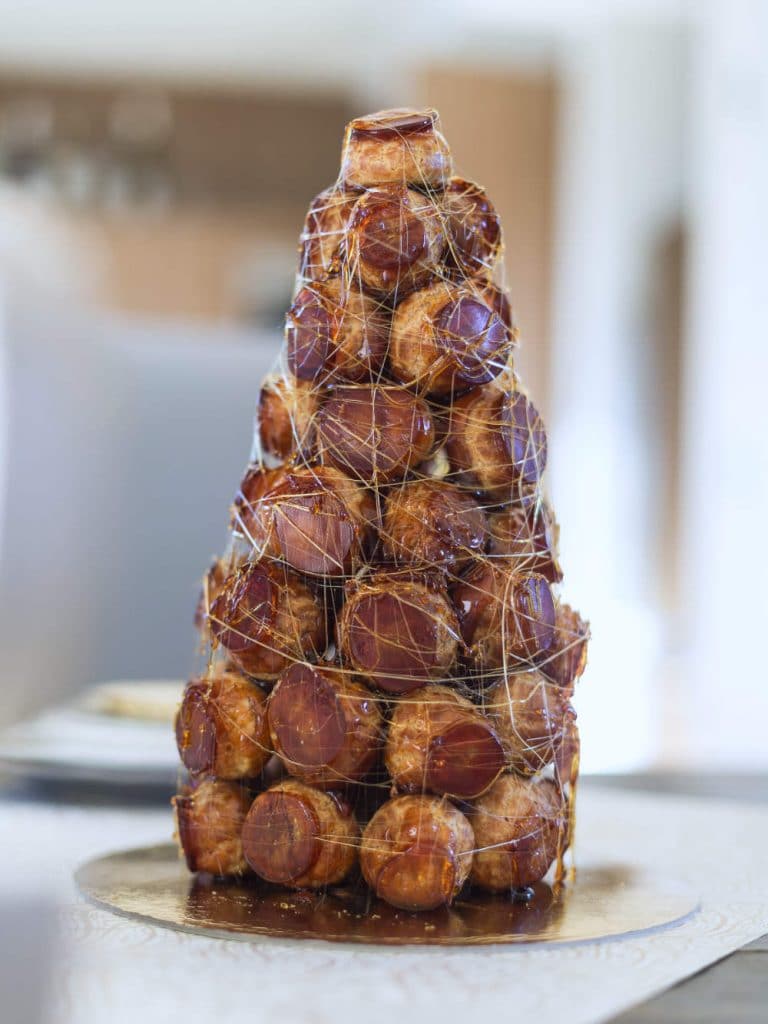
This literally translates to bite in the mouth and is made out of small choux pastries. If you do want to try a pâte à choux without going to a wedding, you can easily try them at your local French patisserie. (For Canadian readers, they are a bit like timbits!)
9. Canelé
Originally from Bordeaux, a canelé is a small French cake flavored with rum and vanilla. It usually has a soft custard center and looks like a small bite-sized cupcake.
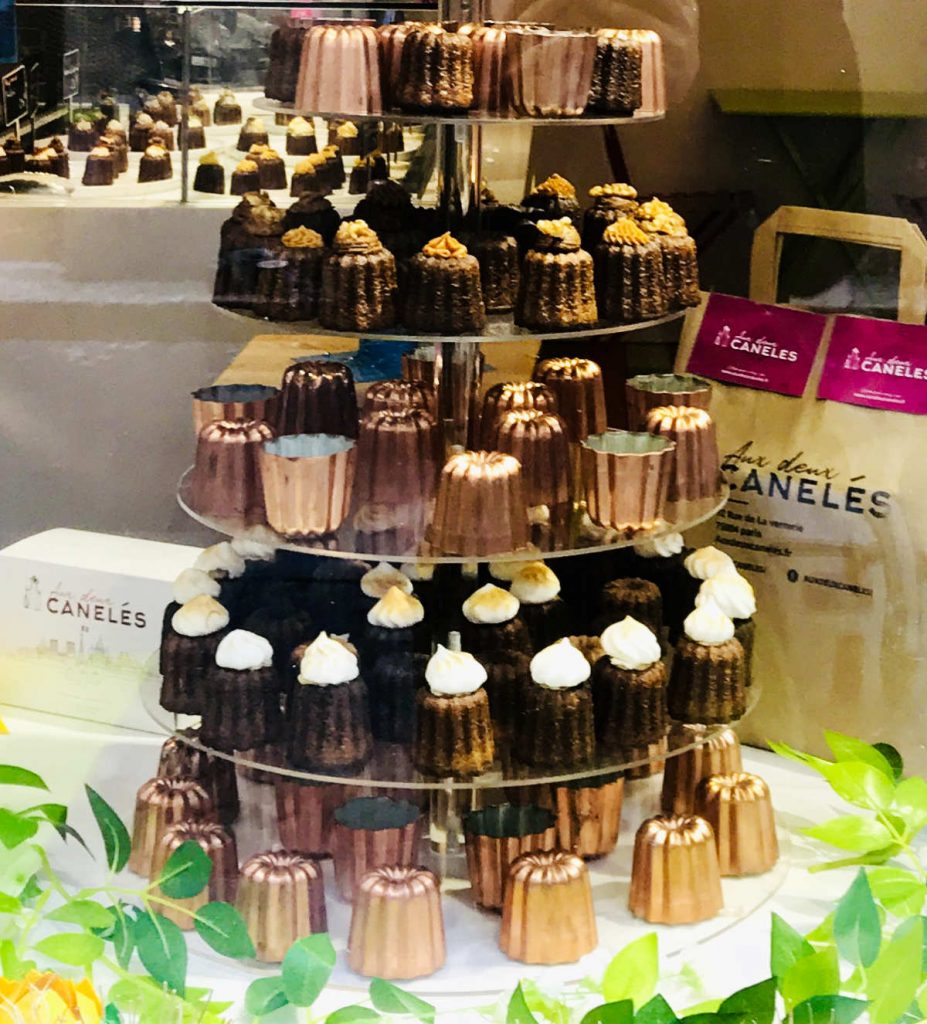
Sometimes topped with cream, it is now widely available across France, and is often given as a gift.
10. Madeleine
Yes, Madeleine may a traditional French girl’s name, but in France, it is also a famous cake. It is unclear who the real Madeleine was, but the cake is believed to date back to the 18th century.

Originally from north-eastern France in Alsace, madeleines are very small sponge cakes that are baked in a distinctive shell-like mold to give them a special appearance. It can be purchased in grocery stores or in bakeries across France.
11. Quatre Quart
The quatre quart means 4 quarters in French, and is traditionally called a “pound cake” in English.
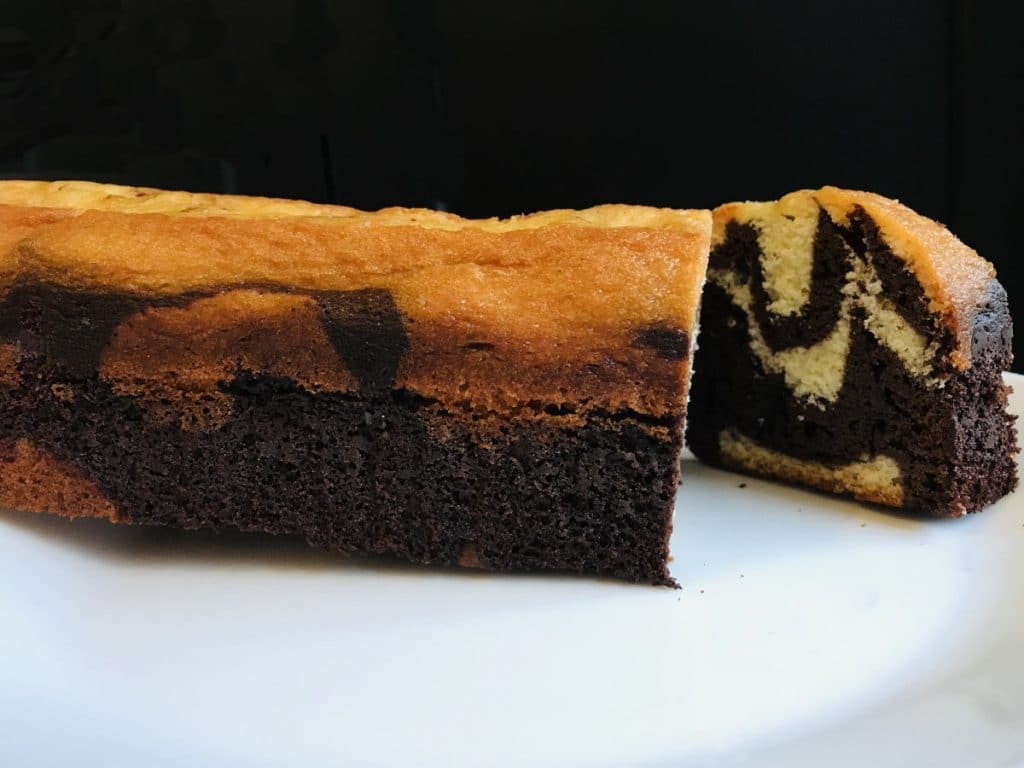
It is a rather basic rectangular cake that is served on simple occasions like tea or as an after-school snack. It can be purchased in grocery stores or in bakeries across France.
(Fun fact: It is usually the only cake allowed in most French preschools for children’s birthdays, so as to avoid allergies and messy eaters.)
12. Dacquoise
The Dacquoise is a cake from the southwest of France in Nouvelle Aquitaine. It consists of two or three layers of almond dough separated by layers of butter cream and sometimes fruit.
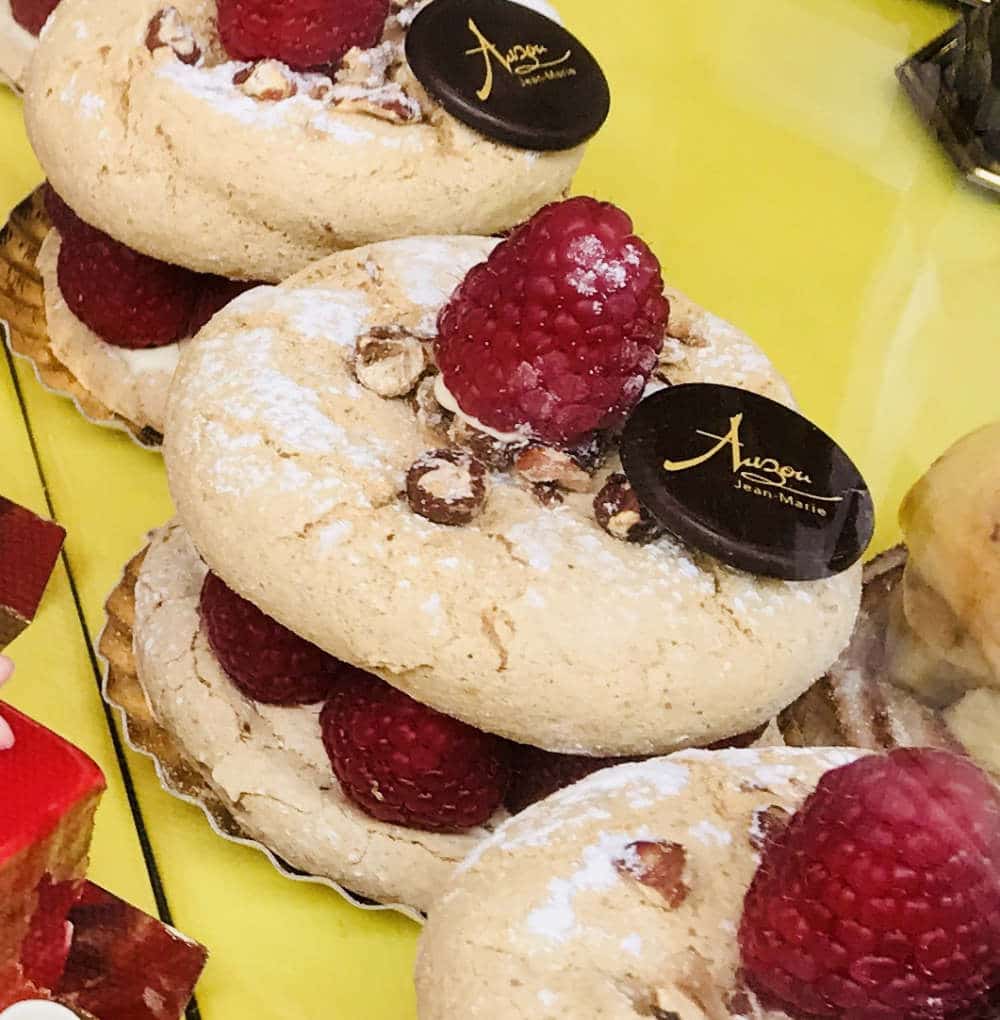
Often nuts like pistachios, coconut, or hazelnuts will be baked into the dough as well.
13. Paris – Brest
A Paris-Brest is a donut-shaped pastry filled with praline cream. It isn’t the lightest dessert on the list, but it is definitely one to try (and share with a friend).

The dessert was created in 1891 to commemorate the creation of a long distance bicycle race (the predecessor of the Tour de France.) Brest is a city on the coast of Bretagne (Brittany), and the bicycle race went from Paris to Brest and back.
The Paris-Brest bicycle race ended in 1951, but its namesake dessert lives on.
14. Gateau St. Honoré
The gâteau Saint Honoré is a dessert cake named for the French patron saint of bakers and pastry chefs, Saint Honoré or Honoratus (600 A.D.) who was the Bishop of Amiens.

Don’t be fooled though, the cake was only invented in the 19th century at the Chiboust bakery on Rue Saint-Honoré in Paris. It features small pâte à chou (dough balls) encircling a butter cream center or chantilly, like a halo.
15. French Flan
Flan might be a french word, but the flan you are thinking of is actually a crème caramel.

A French flan is a type of cake which has a crust and is usually served as a pie slice. Not that a crème caramel is not great, but if that is what you are looking for, don’t be disappointed if you accidentally receive a flan instead!
The french flan is not very sweet itself but is sometimes served with caramel or chantilly cream on top. Get the French flan recipe here.
16. Clafoutis
The clafoutis is similar to the French flan, but is made traditionally with black cherries.

Like the flan, it is baked with a crust at the bottom, and sometimes served with whipped cream.
17. Brioche
A brioche is a light sweet bread containing eggs and butter. It is a cross between a bread, a cake, and a viennoiserie (pastry) and is believed to originate from Normandy in the 16th century.
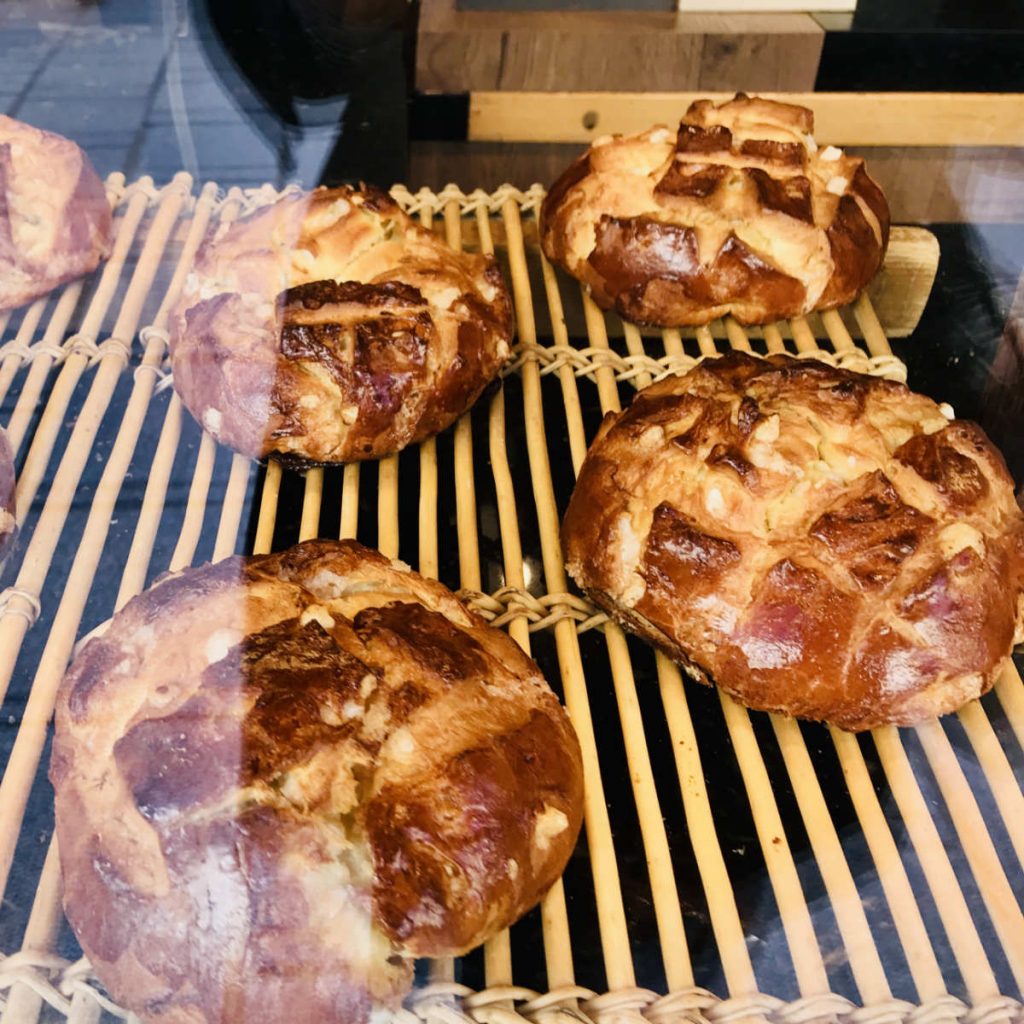
The purportedly famous saying by Marie-Antoinette was actually “Qu’ils mangent de la brioche!“, not “cake”, which is gâteau in French.
There are several types of brioches, with each region having its own recipe and speciality:
- Brioche Parisienne – the classic brioche made from butter, eggs, milk, flour, sugar, salt, yeast. Brioche de Paris is recognizable for its shape, made up of two superimposed balls, the smaller one on top of a larger one.
- Brioche de Nanterre – the historic brioche dating back to the days of Saint Genevieve in 450 AD. Unlike the brioche parisienne, the brioche de Nanterre is rectangular and made up of balls of dough placed side by side.
- Brioche tressée de Metz – a braided brioche (three pieces of dough braided together) from Metz during festive occasions.
- Brioche au sucre – brioche with small bits of sugar on the crust.
- Brioche vendéenne – a large round brioche that is sometimes called the pain de Pâques, as it is usually served for Easter (and sometimes during weddings in the Vendée region of France.)
- Cougnou – a brioche that is eaten in December during the period of Saint Nicholas and Christmas. It is oval-shaped with a decoration in the middle to look like a baby Jesus swaddled and lying down.
- Tarte tropézienne – a brioche shaped like a cake that is flavored with the orange flower water. In the middle, it is filled with a butter cream and a custard.
18. Financier cake
A gâteau financier is a small rectangular cake made with flour, almond powder, and egg whites.
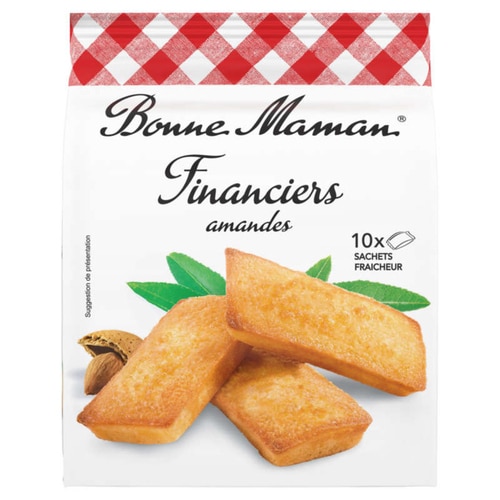
It is sometimes called a visitandine or friand in Normandy. In France, you can buy them in packets of 10 to serve as snacks for kids for their gôuter. It can be purchased in grocery stores or in bakeries across France.
19. Galette des rois
If it is early January, you will likely find your local French patisserie packed with people trying to buy a galettes des rois. And that is because this treat is especially reserved for 3 Kings’ Day or Jour de l’Epiphanie.
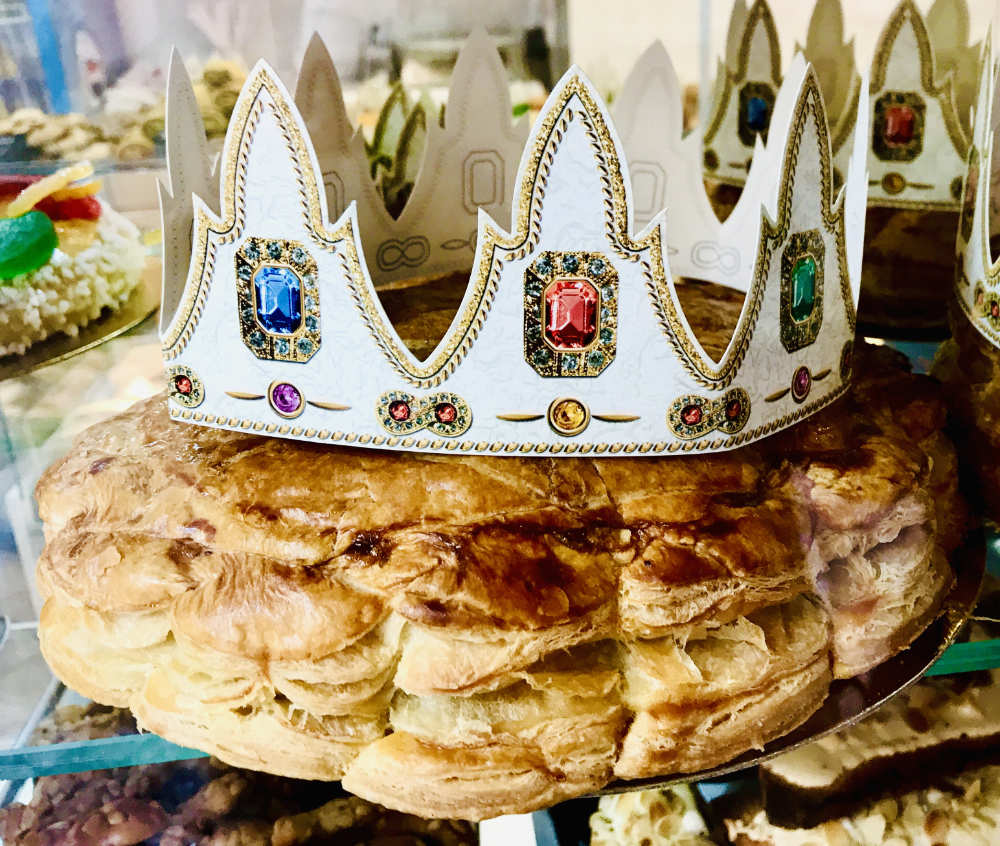
The galette des rois is a type of cake made from pastry that has been browned in the oven. It is sometimes filled with frangipane, fruits or creams.
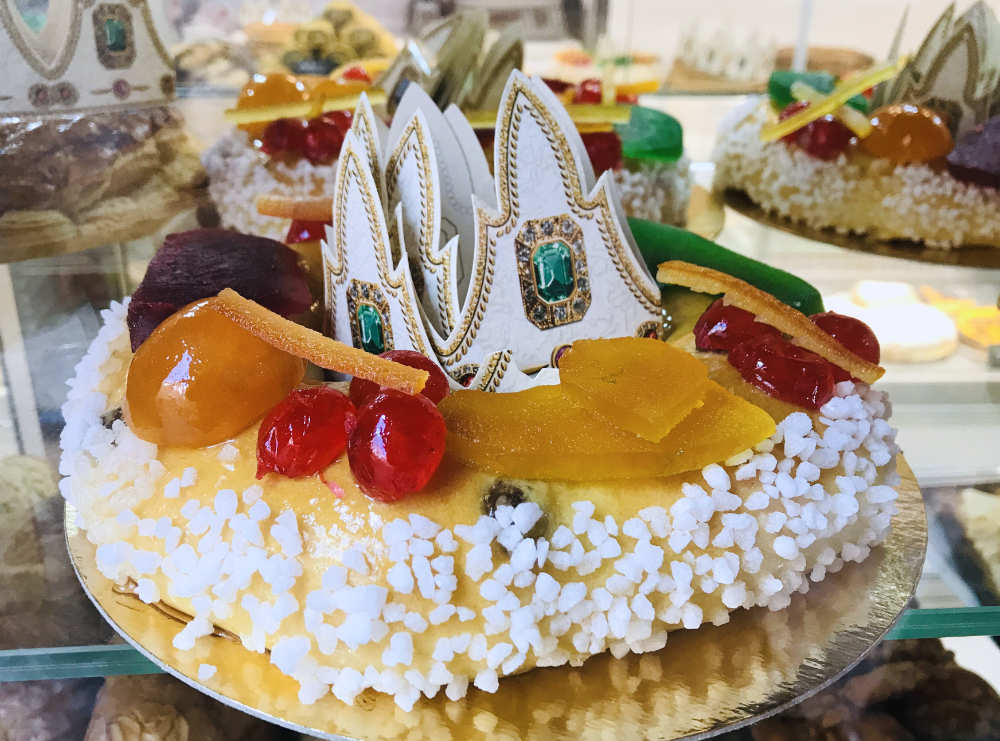
In the south of France however, there is a 2nd type of cake that looks like a brioche (unsweet cake) and is topped with confit de fruits.
20. Gâteau Opéra
Named after the Opéra Garnier in the 8th arrondissement of Paris, the gâteau opéra is an almond sponge cake. It is usually made with a coffee, chocolate filling and icing, however it can also be covered it fruit syrup.
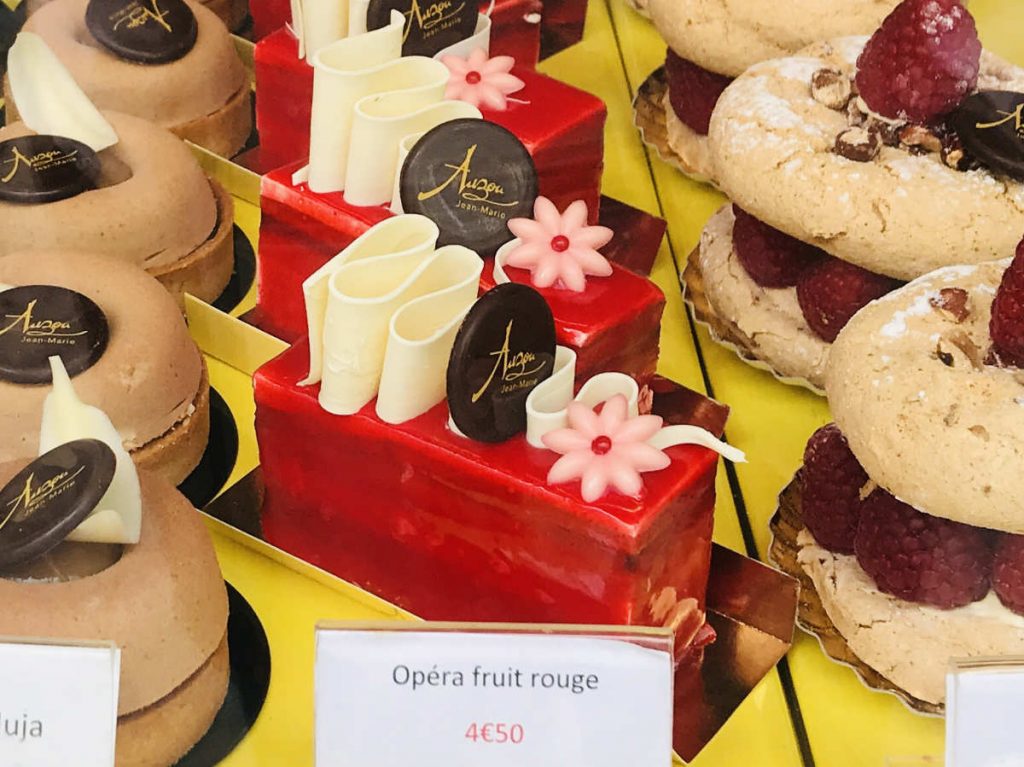
It is usually highly decorated and soaked in coffee syrup (or the digestif Grand Marnier).
It is believed to have been invented in around 1955, intended as a luxury dessert to attract the bourgeoisie crowd, hence the name.
21. Gâteau Basque
The gâteau basque is similar to the flan, but it is traditionally filled with black cherries, cream almond, or rum and vanilla. Created in Basque country (Nouvelle Aquitaine near the French-Spanish border) in the 19th century, it used to only be served on Sundays and public holidays.
These days, a gâteau basque festival is celebrated every year in October in the town of Cambo-les-bains in Nouvelle Aquitaine.
22. Far Breton
The Basque may have the gâteau basque, but Brittany has its far breton. Originally, it was a wheat porridge that was baked in the oven, with dried fruits such as prunes or grapes added to it.
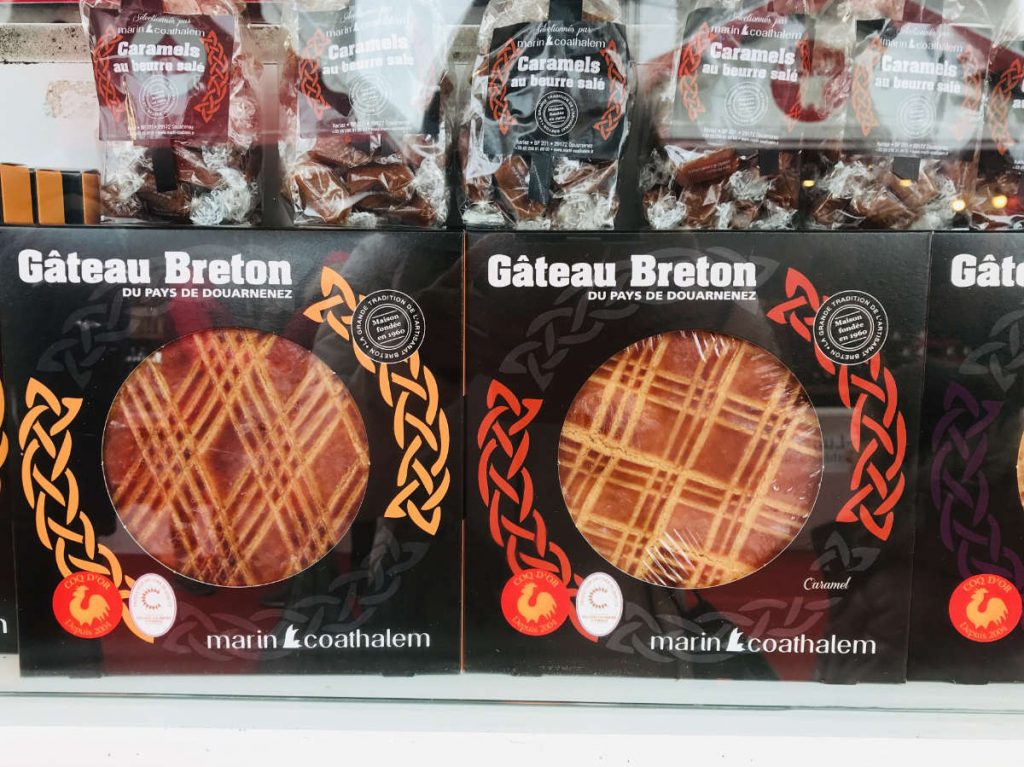
Today eggs and flour are also added to it, making it slightly less dense than it was previously. Rum is also sometimes added to the recipe. It is considered quite a traditional dish in Brittany, usually served with a local cider.
23. Gâteau au Yaourt
Gâteau au Yaourt (translated as “yogurt cake”) may be the cake specially made for kids, but that doesn’t mean adults can’t enjoy it as well.

Light and fluffy, it makes a perfect after-school snack, or a lovely dessert after a heavy meal. Get the Gâteau au Yaourt recipe here.
24. Fenetra cake
Fenetra is a traditional pastry cake from the Toulouse area, that is made with almonds, candied lemon and apricot.
The fenetra is generally oval in shape, with three layers. The base is a shortbread dough on top of which is is a filling made from apricots cooked in a marmalade and cubes of candied lemon peel.
This is then topped off with a biscuit dough layer made from almonds, the same as the dacquoise.
It is not that common across the rest of France, but is celebrated in the city of Toulouse with the Grand Fénétra festival which takes place each year at the beginning of summer.

If you enjoyed that article, you may like to read more about other traditional French foods and drinks. A bientôt!
